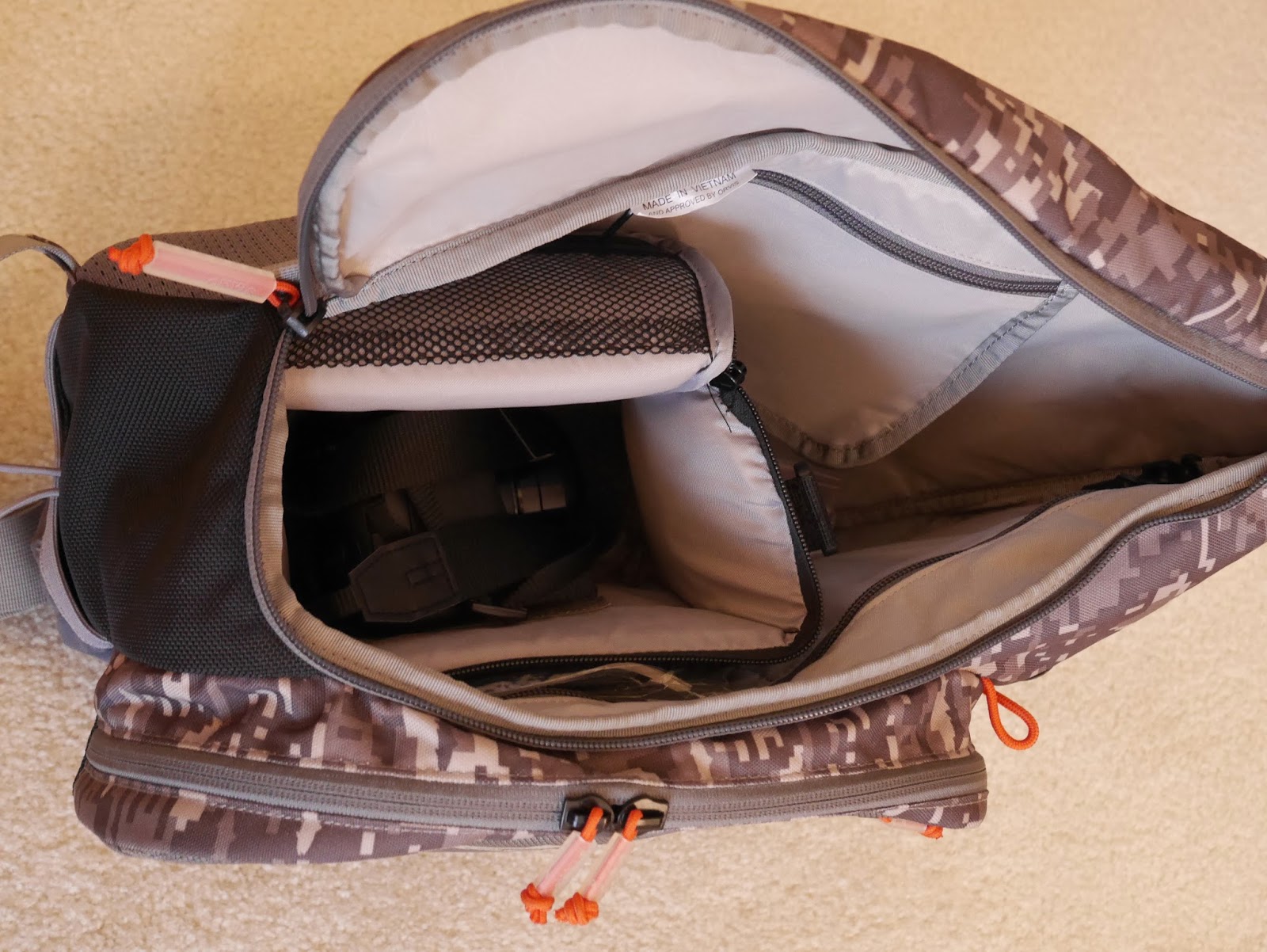 |
| Jim Boucher helping Kirk land a fish |
The benefit of the sling pack is that most of the time pack is out of the way, but it is easy and convenient to access it when you need it. Because it is slung over your shoulder, you can slide it around to your front using just one hand to access tippet, flies, or whatever.
 |
| Orvis Guide Sling Pack |
When I decided to get back into birding I was looking for a good pack that would allow me ready access to my gear - camera, guide(s), etc. A regular pack was too inconvenient to take off when wearing binoculars. The more I thought about it, the more I thought that the Guide Sling Pack might be the perfect solution. It was. The end. (Hemingway would like those crisp, short sentences, but my posts would be way too short, so I continue.)
The pack has a main section and two other zippered pockets. The main part of the pack opens into a large compartment. This space is large enough for a good-sized camera with plenty of room left to tote your binoculars or lunch. At the far left of the picture is a mesh pouch for water bottle (for those who drink water).
The largest pocket is big enough for the Sibley Eastern U.S. field guide and another, slightly smaller guide. I also keep a small voice recorder in this pocket. Using a voice recorder can be a more convenient and quicker way of keeping track of birds than writing each one down.
I keep my "Rite-in-the-Rain" hard-bound book and pen in the smaller front pocket along with Zeiss lens wipes. The book is a convenient 4.25" x 6.75" and the pages are waterproof. The pen has waterproof ink, won't freeze and can write from any angle. The book and pen are the perfect combination for writing field notes in any kind of weather.
To the left is a picture of all the stuff I typically take with me when I head out the door into the field, minus my binoculars. So far the outfit seems to work very well and I don't see a replacement pack in my future.
An added benefit to this set-up is that I also have a Guide-sized sling pack for fly fishing. I'd argue that this dual purpose makes the whole purchase economical as well. I can see how certain spouses might disagree with this view.













